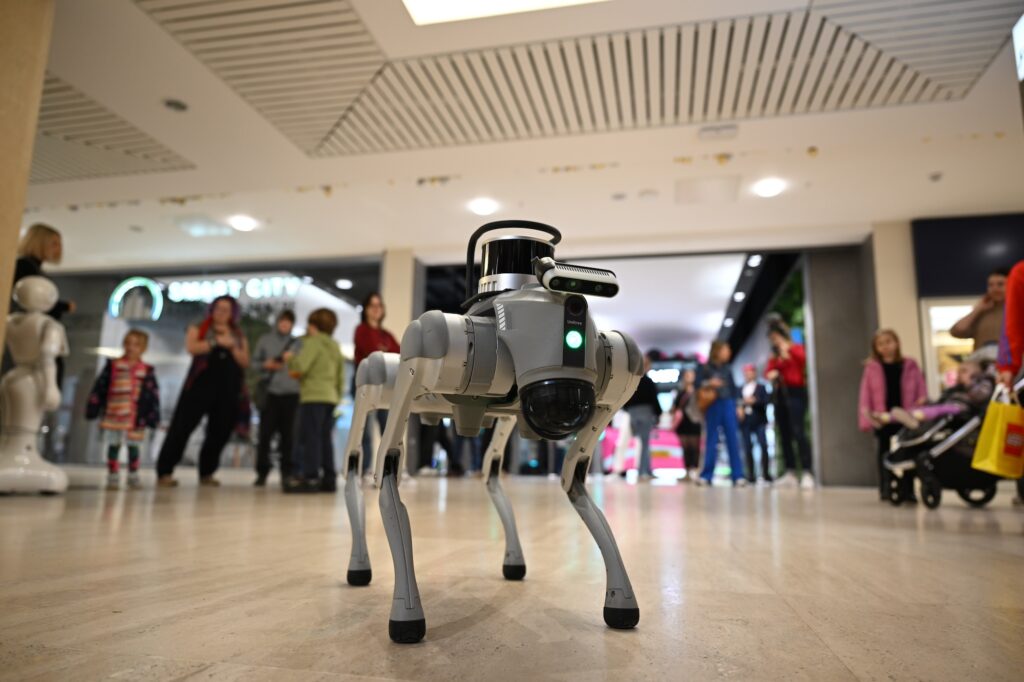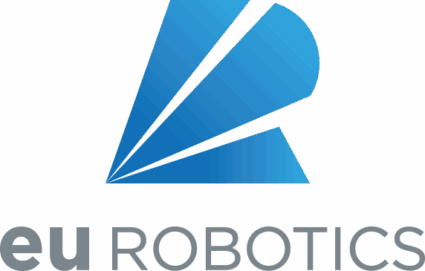Amazon uses AI to make robots better warehouse workers
Banana-selling robots pitch customers in test run in Chicago suburbs
Stanford’s tiny eye chip helps the blind see again
AI turns x-rays into time machines for arthritis care
Kassow Robots’ Edge Edition 7-axis Collaborative Rrobot Arm
Kassow Robots’ Edge Edition 7-axis Collaborative Robot Arm
Robot Talk at the Smart City Robotics Competition

Claire chatted to competitors, exhibitors, and attendees at the Smart City Robotics Competition in Milton Keynes.
This bonus episode was sponsored by euRobotics, an international non-profit association that aims to boost European robotics research, development, and innovation.
Basler IP67 Camera and Components
Basler 3D Vision Solutions for Robotics and Warehouse Automation
UR20 Cobot Enables New Palletizing Opportunity at Bob’s Red Mill
AI model could boost robot intelligence via object recognition
Paper-thin magnetic muscles bring origami robots to life for medical use
From Code to Context: How Spatial AI is Powering the Next Leap in Manufacturing
ChatGPT Upgrade Promised By Year’s End
The Pitch: You’ll be Able to Make ChatGPT as Cool, Creative, Witty — and Friendly — as You’d Like
ChatGPT-maker’s CEO is promising to release an upgrade to ChatGPT that will bring its personality back to the old glory of ChatGPT-4o.
Sam Altman’s promise was triggered by widespread disappointment in the release of ChatGPT-5 earlier this year, which many believe gutted ChatGPT’s personality, making it feel cold and distant.
Observes Altman in an Oct. 14 tweet: “In a few weeks, we plan to put out a new version of ChatGPT that allows people to have a personality that behaves more like what people liked about 4o — we hope it will be better!
“If you want your ChatGPT to respond in a very human-like way, or use a ton of emoji, or act like a friend, ChatGPT should do it — but only if you want it.”
Should Altman’s promise play-out as hoped, it could be celebrated by ChatGPT fans as the best year-end gift they could receive this year.
In other news and analysis on AI writing:
*Google Offers Free Course on AI and Journalism: Journalists looking for the latest on how to level-up their AI skills may want to check-out a new, free, four-week course Google is offering on the topic.
Co-sponsored by the Knight Center for Journalism, the deep dive is designed to show journalists – and similar researchers and writers – how to leverage Google AI tools like Google Gemini, NotebookLM and Pinpoint in their day-to-day work.
Observes writer David Gewirtz: The course is aimed at journalists, “but if you’re a student or a writer, you could learn a lot, too.”
*ChatGPT Just Got a Privacy Upgrade: Thanks to some legal maneuvering, ChatGPT users looking to get their chats from the service easily deleted can now do so.
Previously, those chats had been forced to stay in preservation limbo – deleted from sight but still preserved by ChatGPT’s maker OpenAI – due to a court fight between OpenAI and The New York Times over alleged copyright infringement.
Fortunately for users, The New York Times has agreed to release OpenAI from that court-ordered preservation.
*Microsoft to Students in Washington State: C’mon and Take a Free Ride: Tech goliath Microsoft – which calls the state of Washington its home – just delivered lots of free access to AI for high school and college students there.
Under the giveaway, Washington high school students get three free years of Copilot Chat, Microsoft 365 desktop apps, Teams for Education, and Learning Accelerators – which are AIs designed to help students study.
Meanwhile, community college students in the state get 12 free months of Microsoft 365 Personal – Microsoft’s AI-powered productivity suite.
*Microsoft Beefs-Up AI in Windows 11: Microsoft is rolling-out a new feature of Windows 11 that enables you to access onboard AI with your voice.
Key features that will be accessible via voice include AI assistants, AI agents and AI contextual intelligence.
Observes Michael Nunez: “Starting this week, any Windows 11 user can enable the ‘Hey Copilot’ wake word with a single click, allowing them to summon Microsoft’s AI assistant by voice from anywhere in the operating system.”
One caveat: While AI agents have been sold hard as magical assistants that can complete multi-step tasks for you autonomously, in practice, those agents don’t work all the time.
*Discount Version of ChatGPT Rolling Out in Asia: ChatGPT’s maker OpenAI is rolling-out a bargain version of the chatbot across 18 Asian countries — part of its effort to stay the number one chatbot on the planet.
Priced at under $10/month, ‘ChatGPT Go’ is essentially a stripped-down version of ChatGPT Plus, a $20/month version that offers more than ChatGPT’s free version.
Observes writer Nina Raemont: “This subscription tier is available in 18 select countries, including India, Afghanistan, Bangladesh, Pakistan and Indonesia.”
*Salesforce Deepens Integrations with OpenAI and Anthropic: Salesforce – a sales, marketing and service suite designed for customer relationship management – just got tighter integration with key AI players OpenAI and Anthropic.
Observes Reuters: “The deals, announced on Tuesday, will embed OpenAI’s latest GPT-5 model and Anthropic’s Claude family of models directly into Salesforce’s ecosystem, enabling employees and consumers to interact with customer data and analytics in ChatGPT, Slack and Salesforce’s own software.
“The twin deals underscore Salesforce’s push to make its Agentforce 360 platform a central access point for major AI models, as enterprise software makers race to integrate generative AI tools into everyday business workflows.”
*Google Rolls Out Gemini Enterprise: Google has created a special version of its Gemini AI for business — Gemini Enterprise.
Based on the Gemini chatbot, which is Google’s answer to ChatGPT, Gemini Enterprise is designed to be the “front door” to AI for every employee at a business, according to Thomas Kurian, CEO, Google Cloud.
Observes Kurian: “This complete, AI-optimized stack is why nine of the top 10 AI labs and nearly every AI unicorn already use Google Cloud.”
*Oops, Sorry Australia, Here’s Your Money Back: Consulting firm Deloitte has agreed to refund the Australian government $440,000 for a study both agree was riddled by errors created by AI.
Observes writer Krishani Dhanji: “University of Sydney academic Dr. Christopher Rudge — who first highlighted the errors — said the report contained ‘hallucinations’ where AI models may fill in gaps, misinterpret data, or try to guess answers.”
Insult to injury: The near half-million-dollar payment is only a partial refund to what the Australian government actually paid for the flawed research.
*AI Big Picture: Despite AI Bubble Fears, Goldman Sachs Goes All In on AI: Global investment bank powerhouse Goldman Sachs is creating a special company team to go after the billions in AI infrastructure deals designed to build-out the new AI data centers, energy power plants and similar that AI titans insist the world will need for the coming AI boom.
Observes writer AnnaMaria Andriotis: “The effort is being fueled by the new wave of multibillion-dollar deals that involve financing artificial-intelligence data centers, the massive amounts of power they need to run, and the processing units behind the AI build-out.
”The new team will also focus on the building or upgrading of traditional infrastructure, ranging from toll roads to airports, in developed and emerging markets.”

Share a Link: Please consider sharing a link to https://RobotWritersAI.com from your blog, social media post, publication or emails. More links leading to RobotWritersAI.com helps everyone interested in AI-generated writing.
–Joe Dysart is editor of RobotWritersAI.com and a tech journalist with 20+ years experience. His work has appeared in 150+ publications, including The New York Times and the Financial Times of London.
The post ChatGPT Upgrade Promised By Year’s End appeared first on Robot Writers AI.


